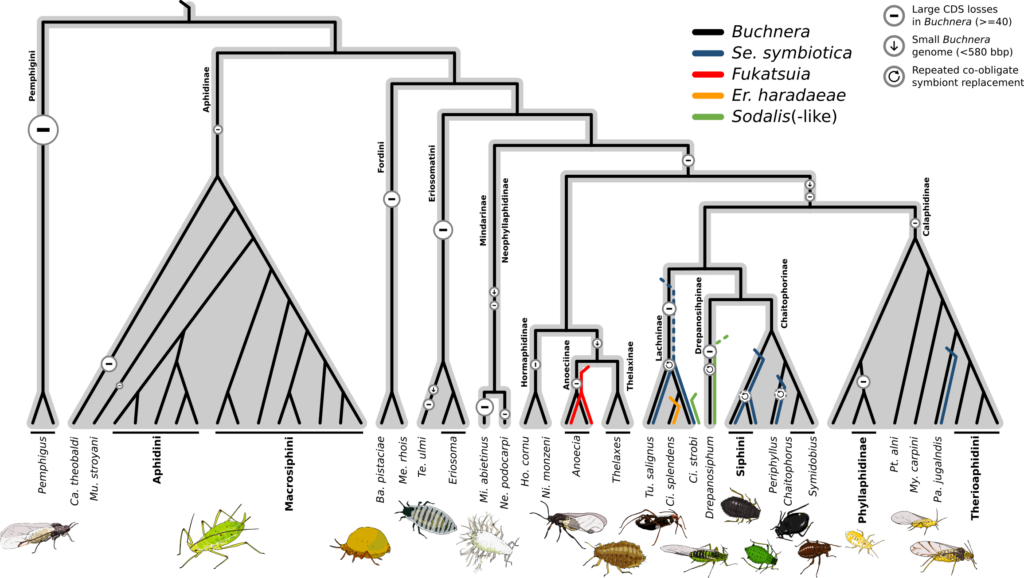
After many years of work, our paper on co-obligate symbioses across aphids is finally out! Aphids are a large family of hemipterans with around 5,200 species organised into 23 extant subfamilies. Most work relating to endosymbionts has been done on the Aphidinae (60% of diversity), where aphids typically host a single nutritional symbiont, Buchnera. However, previous evidence shows that, similarly to adelgids and pseudococcids, some aphids can host more than one obligate nutritional symbiont. These co-obligate symbioses exist in Lachninae and Periphyllus spp., but we know little of these associations across aphids.
In this work, we sought to explore the nature and evolution of these associations. To this goal, we performed 16S amplicon sequencing on a total of 223 aphid samples (147 species, 12 subfamilies). In addition, we newly sequenced the symbionts of 25 aphid species & re-assembled 20 more. We observed that, despite large-scale gene loss in Buchnera often being associated to the acquisition of a new co-obligate symbiont, these two processes can be decoupled: in fact, only a few losses can trigger the establishment of new multi-partite nutritional symbioses. In addition, B vitamins (mainly riboflavin, seem at the core of the evolution of these new co-obligate symbioses (in aphids), with the biosynthesis of biotin often also being taken-over by the new symbiont. In fact, some even bring a new nutrient to the mix, thiamin.
New co-obligate symbionts have most commonly evolved from bacterial taxa known to be facultative endosymbionts of aphids, stressing the facultative-to-obligate lifestyle shift. In conclusion, co-obligate symbioses have evolved anew at least 6 times across aphids, thus existing in upwards of 11% of aphid species (the number is way higher is you do not count the Aphidinae subfamily…).
This was the result of a long-term collaboration with friends and work colleagues Emmanuelle Jousselin and Armelle Cœur d’acier (CBGP, france).
Reference: 10.1101/2022.08.28.505559
*Version of record: 10.24072/pcjournal.278
 Biology and Evolution of Symbiosis (BESymb)
Biology and Evolution of Symbiosis (BESymb)